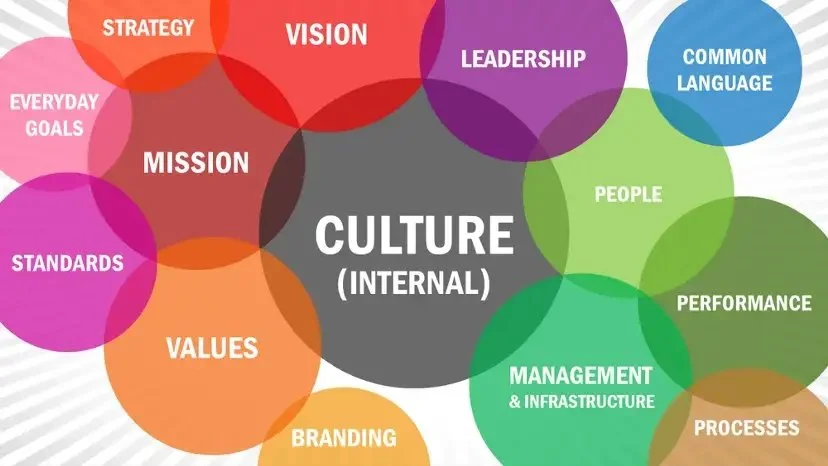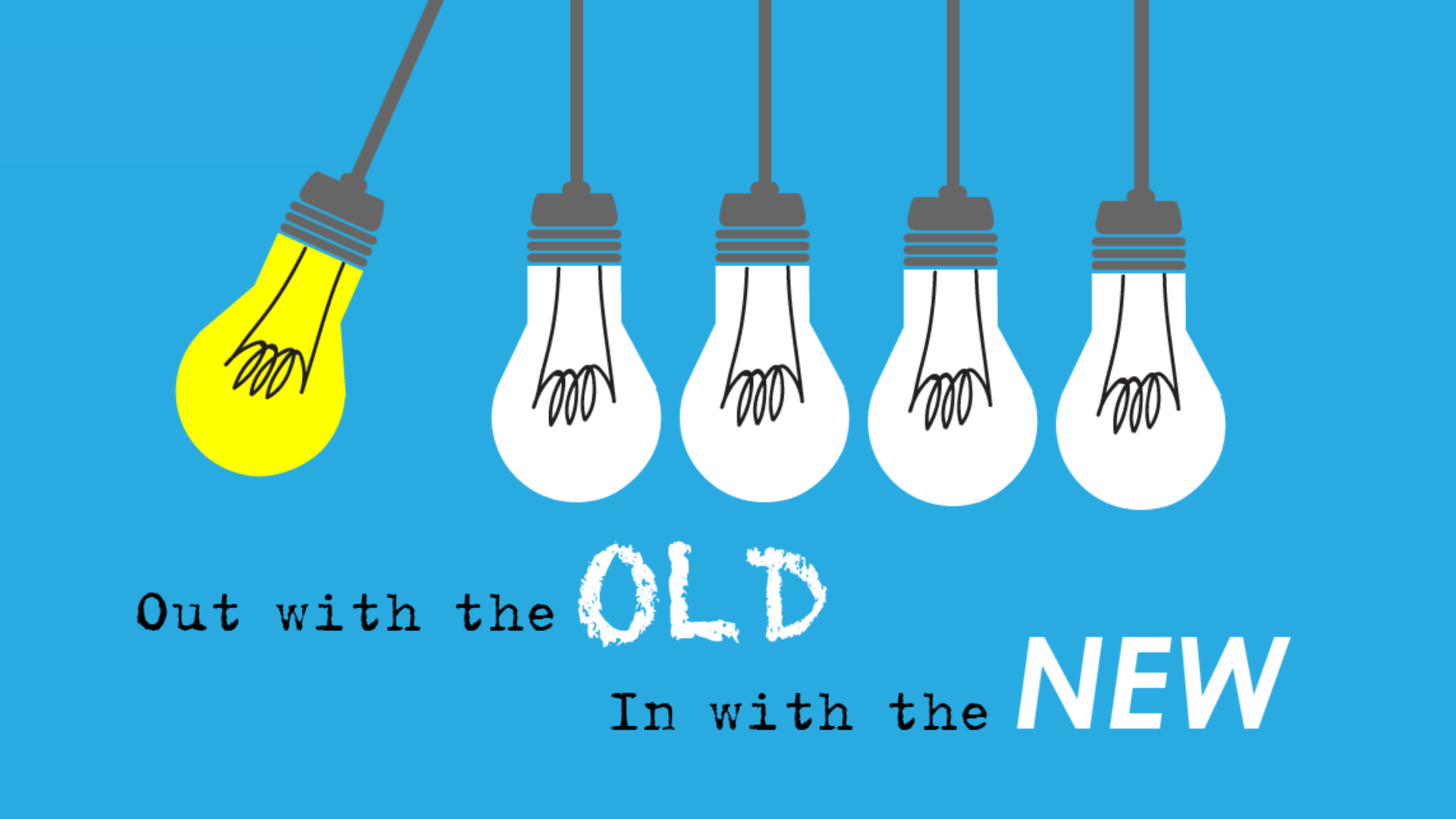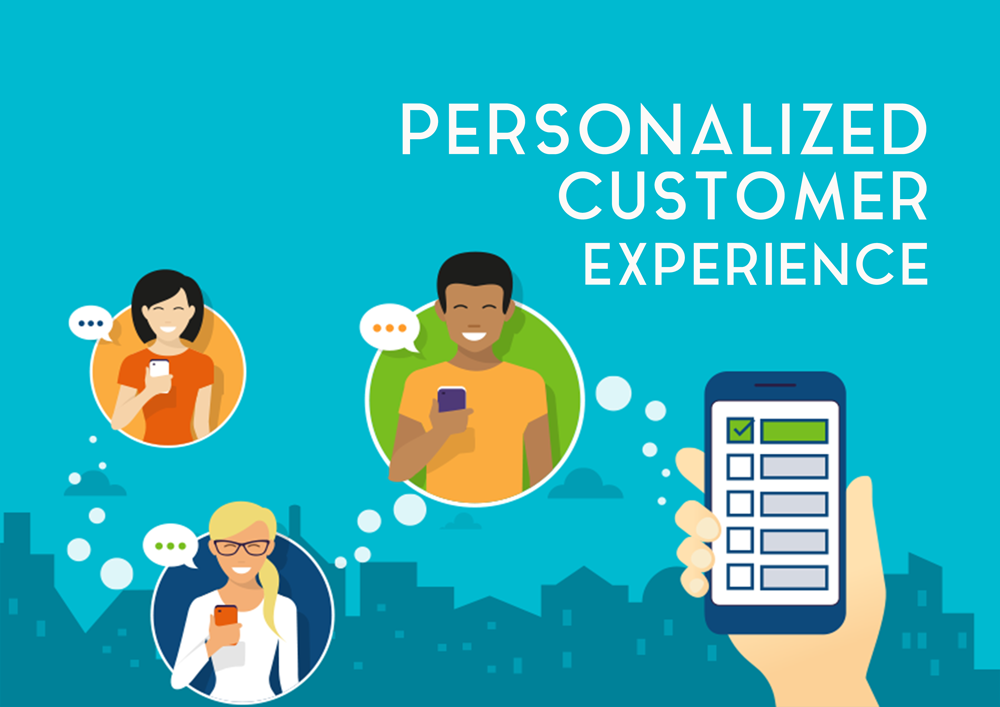2023 Company Culture: Is it everything people are talking about?
We all know we are at an all time high of employees being laid off which means employees who are on the hunt for a new position in 2023 have higher expectations in their new opportunity. These applicants will not only be focused on the position it self, title and salary requirements, however the one area employers have to remember which are important to applicants is company culture. This doesn’t mean what is written on the company website or shown on social media. Applicants are reaching out to people whom already work there to see if actions are happening around culture or is it all for show to bring in quality new employees. The old saying, actions speak louder than words really is holding true when it comes to company culture.
We all know we are at an all time high of employees being laid off which means employees who are on the hunt for a new position in 2023 have higher expectations in their new opportunity. These applicants will not only be focused on the position it self, title and salary requirements, however the one area employers have to remember which are important to applicants is company culture. This doesn’t mean what is written on the company website or shown on social media. Applicants are reaching out to people whom already work there to see if actions are happening around culture or is it all for show to bring in quality new employees. The old saying, actions speak louder than words really is holding true when it comes to company culture.
With less than 2 weeks until the end of the year, is your company really truly invested in a detailed company culture plan? Have you spend the time and energy to analyze what you did this year? What worked, what didn’t work? What did employees like, what do they want more of? Have you not only listed but have you taken the ideas and implemented them for 2023? Culture to employees is one of the top important aspects. Don’t go into 2023 missing the mark as by the end of 2023 you will not only miss the mark for employees but you will have employees leaving and looking for a new opportunity.
Most recently O.C. Tanner published a white paper focusing on the 5 Culture Trends for 2023.
Culture Trend #1: Employees want more from their work. As I mentioned above, salary requirements and standard benefits are not enough anymore. Fulfillment doesn’t just come from doing the tasks that one is asked to do on a daily basis. Feeling like one has a purpose in their overall position along with the feeling of belonging for a bigger purpose is high priority. When someone doesn’t feel like their is greater purposes, they become rundown and feel like they are on a hamster wheel each day.
What can a company implement in their 2023 plan? As leaders, regardless of how much are on your plate, support and encourage balance, create boundaries for your employees. Hold people to PTO so when they return they are refreshed. Give them flexibility, connect with each-other and even those outside of the company, within their community. Employees want to feel they are being invested in, their leader is a mentor and offer training to better themselves as a person, not just in their specific role.
Culture Trend #2: Workplace community is increasingly important. In a world were employees may be spread out, workplace community is even more important than ever before. This goes beyond just a zoom wine down hour. Investing to bring your team together locally or nationally is one of the best investments a company can make. The benefits include increased morale, higher productivity and a sense of belonging. The stats within the O.C. Tanner white-paper is astounding, “ Conversely, according to McKinsey, the top reasons people quit their jobs are they don’t feel valued (54%) and they don’t feel a sense of belonging at work (51%).” “In fact, 72% of employees say it’s important for them to feel part of a community at work. Yet employees are having trouble connecting with their organizations.”
What can a company implement in their 2023 plan? It is not up to the employees to build the connection, companies should have a tactile detailed plan to engage and connect their employees and create a sense of community. Companies should create space, time and planned opportunities for in office and remote employees to feel connection. A detailed culture plan is just as important as a sales budget or a marketing budget.
Culture Trend #3: Leaders are burning out. As a leader myself, or as I call myself a mentor. This couldn’t be more true. Leadership has more on their plate handling multiple jobs not just handling strategy but day to day, in the weeds tasks. Why are we allowing all of this to be on one leader in a department? It is directly leading to burn out,
Administrative tasks—planning and budgeting, timecard approvals, etc.
Operational work—project management, attending meetings, hitting deadlines, etc.
Manage teams—performance reviews, one-to-one meetings, hiring, etc.
Be a leader—coaching and mentoring, developing, connecting, building culture, wellbeing, retention, etc.
Strategic planning—innovating, planning, etc.
It is only driving leaders to be poached or to look elsewhere to seek out balance in their lives. “Only 1 in 3 managers are emotionally engaged at work, and managers experienced the highest drop in engagement over the past year.” As a human can only bear so much not only in the work force but balancing their responsibilities outside the position.
What can a company implement in their 2023 plan? Companies should be focused on their leaders. Hiring an additional employee would be the best investment not only for the company but for their leader to be successful. In turn keeping leaders for a longer term, reducing turn over and training new employees to be a leader. Offering support, resources (that means additional employees) and tools to meet the demand they are given.
Culture Trend #4: The rise of generalists. Having a generalist on your team is and can be a great thing, but generalist can and do feel overlooked, as a matter of fact, 52% feel overlooked according to O.C. Tanner published white paper. Since they do so much in so many areas, these employees don’t feel supported or appreciated.
What can a company implement in their 2023 plan? First take a look at each team and assess who within the company may fall in the generalist and make a specific plan for these employees. Although these employees are awesome at handling a variety of tasks, as a leader, find the skills they flourish and excel in and strengthen those. Look at connecting a mentor/leader to these employees so they don’t feel stretched thin and have someone to go to for guidance. These type of people need to feel valued and noticed. Do so by highlighting their accomplishments not only directly to them but to the entire organization.
Culture Trend #5: Symbolic awards build belonging. Amplifying appreciation leads into physical awards. When employees work from home and sometimes may be isolated, seeing a physical symbol of an employees contribution can go a long way. This also allows the employee to showcase how much the company values you them and even for the employee to share on social media
What can a company implement in their 2023 plan? Include symbolic awards for each team, include how long they have been with the company, for contributing to the company values. Hold to these and share these accomplishments not just with the employee but throughout the year on a company wide stage.
Walking out of 2022 and into 2023, each company must remember employee connection, company culture is just as important if not more important to the companies sales plan or marketing plan or any others. Without company culture the employee turn will continue and the companies brand will continue to be weakened. One added piece to remember: this is not something that can be done alone, by one department, seek out platforms to assist like Workvivo. The value a culture driven platform can bring is immeasurable and investing in a platform that can complement your teams will bring an enormous amount of return. Let’s walk into the new year with our heads held high and a solid plan for employees to thrive, flourish and feel appreciated.
Shifting to Meet Your Employees
It has been said over and over, Gen Z and Millennial’s all have different expectations when it comes to employment. During several different positions in my career I have had the opportunity to hire for a variety of roles and even sifting through resumes these values can be seen even in the applicant’s profile. There are always two sides to a coin and some may believe we shouldn’t “bend down” to what these applicants are looking for, but what if as leaders in a company, we changed the way we thought. Looking at this change as an opportunity to grow, learn, and choose to see the positive change that can happen within the company. It isn’t all bad as many will say.
It has been said over and over, Gen Z and Millennial’s all have different expectations when it comes to employment. During several different positions in my career I have had the opportunity to hire for a variety of roles and even sifting through resumes these values can be seen even in the applicant’s profile. There are always two sides to a coin and some may believe we shouldn’t “bend down” to what these applicants are looking for, but what if as leaders in a company, we changed the way we thought. Looking at this change as an opportunity to grow, learn, and choose to see the positive change that can happen within the company. It isn’t all bad as many will say.
What is our role as mentors, leaders and being part of a growing company? How do we foster these expectations, wants and needs, as we choose to hire for open positions. I believe our role as mentors and leaders is to remember it is not only a one way street, but it is a two way street where one can learn from both partners. Be open to change, embrace the new desire’s but most important, make sure as a leader you are exemplifying what the company believes in. If a company believes in a work/life balance, for example, as a leader/mentor to an employee hold true to those beliefs and fight for your team member.
There are endless expectations that I have read over the past years, but the 5 below are the ones I think stand out and are most important to remember.
Don’t live to work - Our world revolves around our passions, hobbies, and life outside of work. Inspiration can and will most likely happen when you’re not in front of a computer.
Respect our work boundaries - Morning walks, lunch breaks, PTO, weekends, and evenings. Create space to decompress, one can’t be on 100 all the time and be effective. Hold your team to PTO (and truly be off so employees can come back and be 100% more effective)
Pay - This one is so simple, yet so many companies get it so wrong. Everyone's salary should be transparent from the start. I am a firm believer in showing this up front. Many companies are starting to share this on the open position. Let’s look at it this way, not only are you as a company are being truthful, but both parties time is respected. It is a mutual decision when a position is being filled. Both parties should be interested in making the best fit for the growth and success of not only the business but the employee.
Authentic - It gives energy and brings life to the work they do. It is exhausting to not be yourself. It will drain your employees more if they can not be themselves. Allow authentic transparent conversations as employees will learn and grow as will the company.
Accept our preferred working environment - Not everyone thrives the same way. We should be offering options. Some prefer to work alone, some prefer to work in a space with more people. We should not require everyone to fit into the same box, that will not drive productivity and creativity. Now that people are remote, offer the option to come to corporate or meeting regionally. There are other ways to collaborate and have a variety built into the budget to help extend growth personally for the employee and for the growth of the company.
In the end it is about meeting in the middle, changing out mindset to accept change where we can and are able to and watching the fruit of our labor grow and blossom.
What is Missing from MultiFamily Community Curb Appeal
In the last 5 years, Multifamily constantly talks about digital curb appeal, however over the last 5 years has digital curb appeal really changed? Has communities or management companies really made any changes? If everyone is doing the same, and the prospect is wanting and needing something different, why haven’t management companies changed their direction.
In the last 5 years, Multifamily constantly talks about digital curb appeal, however over the last 5 years has digital curb appeal really changed? Has communities or management companies really made any changes? If everyone is doing the same, and the prospect is wanting and needing something different, why haven’t management companies changed their direction. I most recently came across an article discussing the 4 ways to improve your digital curb appeal and after a conversation with an industry friend, Chris Arnold, with Authentic, a full-service creative partner in the Multifamily industry, we began talking more in depth on what this digital curb appeal should or could look like.
The four ways shared in the above article are no doubt a must have, we have been talking about reviews, google profiles etc for the last 5 years however I think they are additional ways companies can stand out as every website has been incorporating these over the last 5 years.
Everyone is essentially fighting to gain the same prospect, but we must change our minds when it comes to curb appeal. We must incorporate ways to go beyond listing amenities in a list on a website. Prospects are just as interested to understand the services which also need to be showcased. Services are different than physical amenities which communities have always focused on. How does a community bring the prospect to understand the services when services is not a physical amenity like a pool or a dog park?
Below I share 4 additional ways companies can and should partner with their vendors to enhance their digital curb appeal and really stand out.
Recorded Videos - Companies like Realync allow communities to bring the personalization and human to human emotional connection to prospects. To truly invite prospects into the community, share the community experience, stand out from their competition. It is not the same anymore to offer a 3D walk through of a community, but to see beyond the apartment and into what is would feel like to live there. Why not use video beyond social media and create a space for videos of resident testimonials, onsite testimonials, and tours and even share property updates on the community website. Change out these videos monthly, so those that return to a communities website can see things in realtime.
Ancillary Services - We are seeing more and more communities add ancillary services like Valet Trash, (Valet Living) Package Management (Fetch) and Smart Technology (SmartRent) to their communities as it is something that not only brings value to owners/management Companies and onsite team members, but residents are looking and seeking experience that make their daily life easier. If done correctly, Management Companies should look at ways to share these companies on their digital curb appeal. All of these and more brands are partnering with companies and are an extension of the communities brand. One thing that is common is customer support is being held through these partners, directly available to the resident, so why not showcase and build the brand in the digital curb appeal. Most onsite leasing teams talk about these services when a prospect interacts with them, but why wait until then? Let’s take one step back and showcase these services loud and proud on the digital front. The journey for the prospect has changed and starts 6 steps back than it did 5 years ago.
Detailed Sitemaps - Community sitemaps are another one (Engrain and Pynwheel) are just a few out there however enhancements like these are a must, many do have them, but I would include them in the top 4 must have in 2022. Prospects want to see again in detail before they even arrive at the community, what they may see out their windows, where their apartment may be within the community etc.
Distance to Downtown - Interesting Marriott for example showcases their distance to the nearest city, I think this is a really cool feature as Marriott is not just showcasing their hotel, but the experience of what is outside the physical hotel. In our world, we are also selling the community, like shops, downtown or what is closest that may be found of interest to the prospect.
Overall, digital curb appeal has to change. Digital curb appeal is no different than a website outside our industry. When we look at other industries like hospitality how have they showcased their experiences, added services for their guests to enjoy? Marriott also doesn’t call their amenities, amenities, they refer to them as experiences. A small change in verbiage can also go along way when trying to adapt to what the prospect is looking for in their next apartment home.
Customer Service Personalization is needed for Prospects and Residents
Over the years technology has become a must have not only in every aspect of the onsite teams daily job but the prospects and residents living experience. More demands coming at all angles, which leads to the question, how can onsite teams and management companies still continue to focus on personalizing customer service? What should management companies focus on to help create experience differentiators and why is it important?
Over the years technology has become a must have not only in every aspect of the onsite teams daily job but the prospects and residents living experience. More demands coming at all angles, which leads to the question, how can onsite teams and management companies still continue to focus on personalizing customer service? What should management companies focus on to help create experience differentiators and why is it important?
Why the customer service experience must be a blend of tech and in person.
Today nearly all communities will send some form of survey after the fact — when a prospect or resident’s experiences and journey already ended. Communities must change their approach as solely relying on this approach prevents management companies from identifying and correcting issues as they are happening. For example, current surveys have always been reviewed after the prospect has toured the community, however using strategies like frequent engagement through observed behavior, listening strategies and direct feedback on social channels is something companies must start to incorporate. Another great example would be mid tour surveys during a prospects tour are critical avenues for engaging customers and ensuring near-flawless experiences that elevate satisfaction and loyalty. The journey to finding a new home is a combination of in-person and digital experience and multifamily industry must find a balanced blend.
The rising expectation of successful customer experience includes two things: convenience and personalization.
If a company is ignoring signals or failing to capture certain signals, they may be leaving critical insights and opportunities on the table. Collecting resident feedback across every channel and every touchpoint where appropriate is key. Communities must think about the entire experience a resident is receiving and not just a single moment in time. For example: Just taking the feedback from a service request is just feedback from one moment in time, not the entire residents experience which may also lie in social channels, portals reviews etc. “Uncover the right data and you’ll build a robust, segmented customer profiles that allow your brand to create unique, welcoming, and effortless experiences not only for current residents, but future residents.” (1)
Multifamily Industry in one aspect has not changed over the years, being service-oriented. If anything over the years this multifamily industry has increased in being service-oriented, which places a lot of pressure on onsite employees.
In a crowded industry, how does a management company enhance the residents experience while creating less pressure for onsite employees? We already know the old age 1 to 100 model is out dated and in addition to scrapping this model, management teams, must re-evaluate the work load per employee as it directly affects the service the residents are receiving. Listening to employees concerns, and engaging them on frontline decisions gives employees a stake in their own work. Remembering onsite team members have the most authentic and first hand feedback regarding processes and changes, some that may have worked and some that may have not. These insights are ones that need to be taken into consideration along with the software reporting metrics as reports will not gather everything that is needed to make the best decision.
How does Multifamily Industry move the dial and improve customer service with personalization?
In a most recent article by Medallia, they point out “most companies, regardless of the industry — from retail to life sciences — can become obsessed with direct competition, comparing strategies and operations in order to gain an edge.” This couldn’t be more true in multifamily. It has been seen over the years when one management company chooses to add an amenity, then most competitions will do the same. It seems the age old competitor weekly survey is still around as properties are very tunnel vision, focused on what everyone within our industry is doing. The unique approach with stepping outside our industry and looking at brands in other industries can and will give management companies a fresh lense on how they can improve their customer service with personalization. Hospitality is one industry that closely aligns and one that Multifamily should look to in order to dial in and improve not only customer service, but with personalization
(1) Source.
Does Your Companies Leadership Embody Empathy?
As leaders in Multifamily, where onsite team members are still showing up, investing in their residents and still requiring to be onsite, managers at all levels must embody empathy. Over the past several years, our lives have been flipped upside down, our work and family life have been blended and merged into one. The pressure of home and work has been elevated to it’s highest point over the last years. Where does empathy fall in your leadership?
Webster Dictionary says Empathy is, “the action of understanding, being aware of, being sensitive to, and vicariously experiencing the feelings, thoughts, and experience of another of either the past or present without having the feelings, thoughts, and experience fully communicated in an objectively explicit manner”
As leaders in Multifamily, where onsite team members are still showing up, investing in their residents and still requiring to be onsite, managers at all levels must embody empathy. Over the past several years, our lives have been flipped upside down, our work and family life have been blended and merged into one. The pressure of home and work has been elevated to it’s highest point over the last years.
When employees are stressed with work overload as well as at home pressure, work contributions are shown to decrease, tension between colleagues rise, frustration is at an all time high. How can team leaders, lower the employees stress, increase employee contributions and create a positive work environment? A new study of 889 employees by Catalyst found empathy has some significant constructive effects. My top 3 favorite from this report are:
Engagement. 76% of people who experienced empathy from their leaders reported they were engaged compared with only 32% who experienced less empathy. We all want employees to be engaged and enjoy their working environment, even if it is through a zoom call.
Retention. 57% of white women and 62% of women of color said they were unlikely to think of leaving their companies when they felt their life circumstances were respected and valued by their companies. However, when they didn’t feel that level of value or respect for their life circumstances, only 14% and 30% of white women and women of color respectively said they were unlikely to consider leaving. Invest in people, develop them to be excellent leaders by understanding them and getting in the trenches with them.
Work-Life. When people felt their leaders were more empathetic, 86% reported they are able to navigate the demands of their work and life—successfully juggling their personal, family and work obligations. This is compared with 60% of those who perceived less empathy. When we give grace and understanding to employees outside of their job, the return is greater than 30%.
Not only is empathy such a key skill to continue to fine tune, but showing grace to each team member goes along way. When leaders understand the demands employees are feeling not only while at work, but outside of work, employees feel the dedication, caring from their leader. Empathy contributes to positive relationships, increased collaboration, trust and also drives results.
Remember, people are not loyal to a company for the company, people will follow their leader if they leave. Loyalty and investment is from a leader not a company and with stress at an all time high, when a leader invests in their employees, they feel cared about, that employee then in turn has a heart and dedication to do their very best.
In the end we are are human, and want to feel the human to human connection, concern and investment from Leaders. As the new year approaches, will you take a look at your own current daily schedule and make more time to invest in your employees and show grace and empathy?
Do You Have a Social Media Display Window?
One of the most innovative ways to think about Social Media Sites, such as Facebook, Instagram is like the retail display window.
One of the most innovative ways to think about Social Media Sites, such as Facebook, Instagram is like the retail display window. A display window is a window in a shop displaying items for sale or otherwise designed to attract customers to the store. A communities Social Media Sites should be just the same, showcasing the experience of living at the community, enticing viewers to want to come in and visit or connect with the community for more information. All of the ideas below are great to showcase in not only photos, but videos as well. The communities social media page should showcase a little bit of each part of the renters experience such as:
Pre, During and Post Community Events (Creating the Fear of Missing Out)
Community Floor plans
Showcase specific amenities within the unit (IE: USB ports in the apartment home)
Amenities (Not just the amenity alone, but residents using the amenity)
Local Events (Share events from other local pages)






